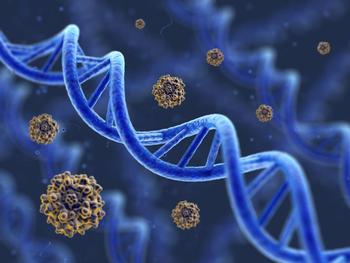Gene Therapy by Beste Mutlu

Gene therapy uses harmless viruses to introduce genetic material into cells. The goal is to treat diseases by correcting abnormal genes or producing a beneficial protein: a concept researchers have been working on since 1990s. Some have dubbed the coming years the “Golden Age of Gene Therapy.” In December 2017, the FDA approved the first in vivo gene therapy to treat patients with an inherited form of vision loss that might lead to blindness [1]. Announced in April-May 2019, two new experimental therapies have brought hope to patients.
Young children with severe immune system disorders would be forced into a life of isolation to avoid infections. For children with X-linked severe combined immunodeficiency (SCID-X1) or “bubble-boy” disease, even the common cold can be fatal. A new gene therapy replaced the mutated IL2RG gene with the correct copy in seven young children, who have developed functioning immune systems and are now with their families at home [2]. The researchers will keep monitoring the children.
Myotubular Myopathy (MTM) is a rare disease that causes extreme muscle weakness from birth. A defect in the MTM1 enzyme causes X-linked MTM. As a result, patients can barely breath on their own and have to rely on a ventilator and feeding tube. Few patients live past the age of 10. Nine boys were treated with a new experimental therapy to introduce a functional copy of the MTM1 gene. While there have been serious yet treatable side effects in some patients, there were also significant improvements: sitting up without help, taking steps with assistance, vocalizing sounds for the first time [3]. These results come after recent successes with spinal muscular dystrophy in 2017 [4] and Duchenne muscular dystrophy in 2018 [5].
More than 900 potential gene therapies are being investigated at various stages of research and development and it is estimated that 40 more treatments will be on the market by 2022 [6]. Time will tell whether these therapies will have long-lasting effects and really usher a “golden age”.
References:
1. FDA approves novel gene therapy to treat patients with a rare form of inherited vision loss | FDA. Available: https://www.fda.gov/news-events/press-announcements/fda-approves-novel-gene-therapy-treat-patients-rare-form-inherited-vision-loss
2. Mamcarz E, Zhou S, Lockey T, Abdelsamed H, Cross SJ, Kang G, et al. Lentiviral Gene Therapy Combined with Low-Dose Busulfan in Infants with SCID-X1. N Engl J Med. 2019;380: 1525–1534. doi:10.1056/NEJMoa1815408
3. Kaiser J. Boys with a rare muscle disease are breathing on their own, thanks to gene therapy. Science. 2019; doi:10.1126/science.aax9005
4. Kaiser J. Gene therapy’s new hope: A neuron-targeting virus is saving infant lives. Science. 2017; doi:10.1126/science.aar3664
5. Promising early results for gene therapy for Duchenne muscular dystrophy. Science, 2018.
6. FoCUS Project Financing of Cures in the US. 2017. Available: https://newdigs.mit.edu/sites/default/files/FoCUS_Research_Brief_2017F211v011.pdf